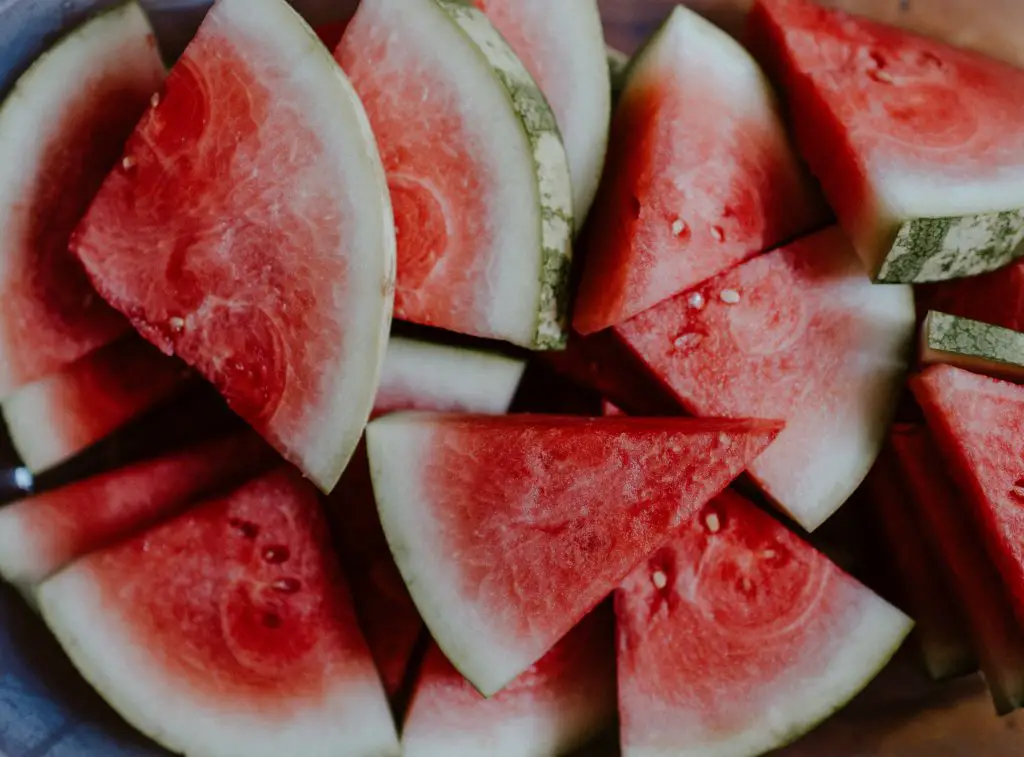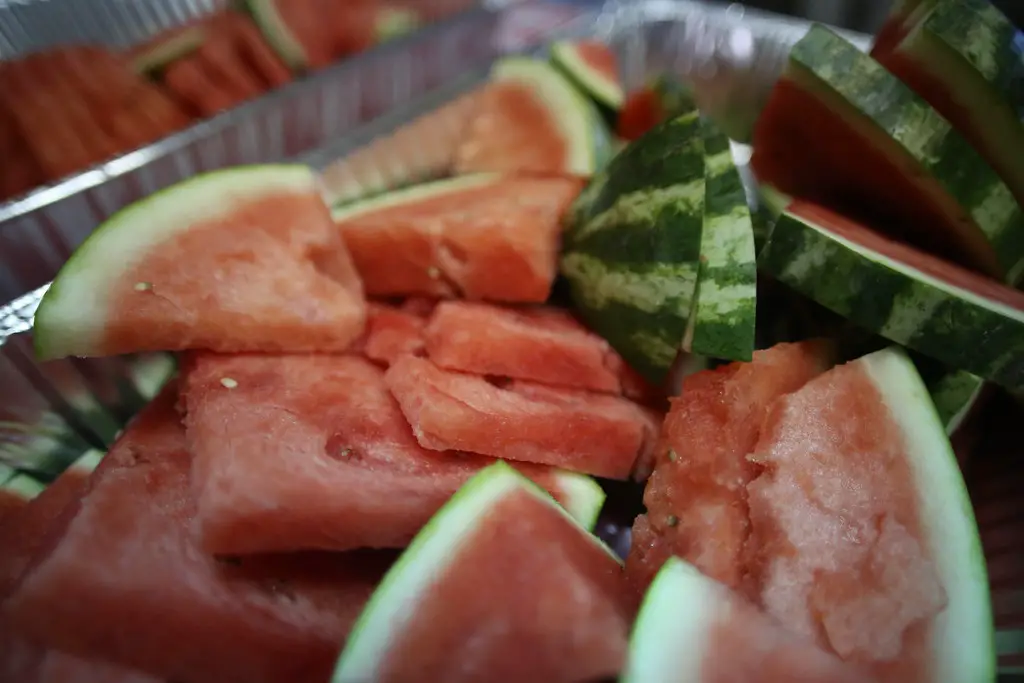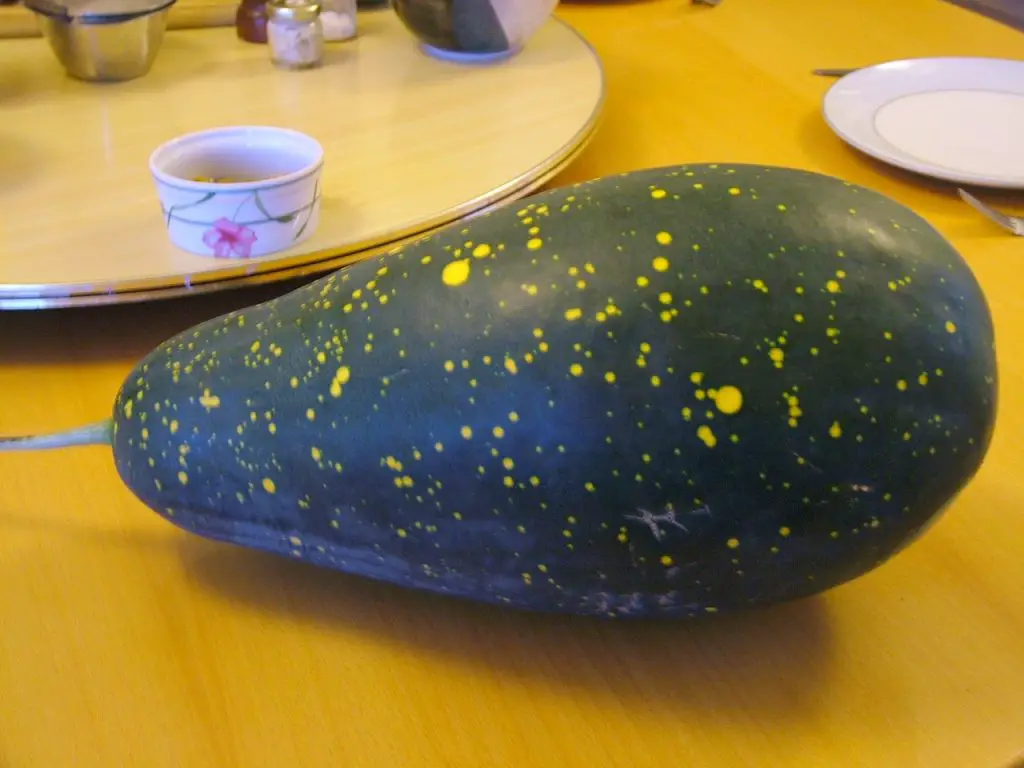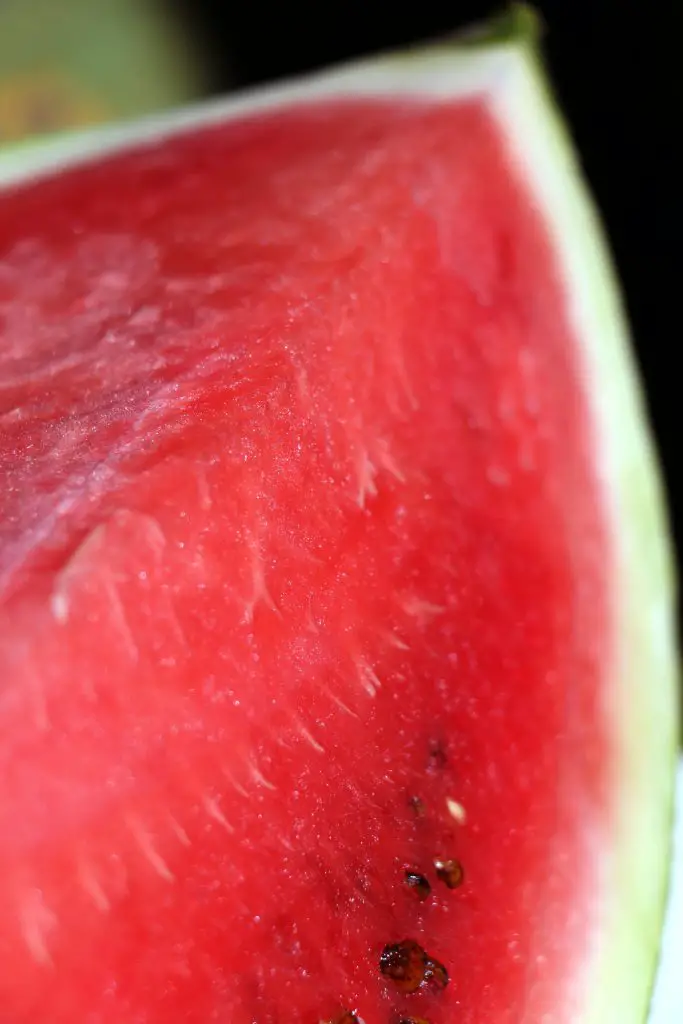How Many Watermelon Per Plant? Watermelon is a delicious fruit that many people enjoy eating. These people have many questions about watermelon, such as how many watermelons can a person get from one plant, how big do they grow, and more. In this article, we will discuss watermelon plants and how many watermelons can a person expect to get from a plant.
The number of fruit that a single watermelon plant will produce on average is around 4 to 5 fruit per plant according to a study by the University of California. However, the number of fruit produced per plant varied widely depending upon the particular cultivar being grown. Some varieties in the study produced 10 or 11 fruit per plant while others only produced 2.
In addition to the variation in the number of fruit produced the size of the fruit also varied significantly which resulted in massive variation in the total yield per plant with the highest yield being 180 lbs down to just 16lbs (82kg to 7.5 kg).
The top 5 ranked varieties test in the study according to the researchers is listed below;
- Sweet Siberian
- Osh Kirgizia
- Picnic
- Moon & Stars – Cherokee Strain
- Moon & Stars – Van Dorin Strain
The rank of the varieties was based on the flavor, the number of fruit produced, and the overall yield. The additional consideration in this trial was the size of the fruit. It was generally considered more desirable for a home gardener to have a larger number of fruits of moderate size. The reason for this is it allowed an entire fruit to be eaten in a sitting rather than creating storage issues with half-eaten fruit.
It is also important to note that while some varieties on average did not rank as well as others for flavor every single variety did at, some stage, rank in the top half for flavor. This indicates that most varieties test would produce an acceptable quality of fruit, for most home gardeners.
In terms of my personal experience, I have only grown one of the top 5 varieties, Sweet Siberian. I can confirm that I found it quite a good variety to eat, however, I have not compared it systematically with other varieties.
How Did The Watermelon Varieties Perform?
The results from the study have been provided below, however, it is important to note that the taste data has been modified to simplify the data down to a single value.
If you would like to grow any of these varieties I would highly recommend visiting the online store Seeds Now which has a broad range of seeds. I have found this company to be one of the cheapest sources of seeds.
Additionally, try visiting of vegetable database which has information on a range of different varieties.
| Variety | Days to Maturity | Total Yield (Kg) | Total Yield (lbs) | Taste Ranking | Fruit Per Plant |
| Moon & Stars – Van Dorin Strain | 137 | 82.0 | 180.5 | 20 | 8 |
| Moon & Stars – Cherokee Strain | 107 | 55.9 | 123.0 | 25 | 5 |
| Sweet Siberian | 123 | 55.1 | 121.3 | 49 | 11 |
| Chris Cross | 107 | 54.3 | 119.5 | 9 | 6 |
| Picnic | 120 | 53.0 | 116.7 | 23 | 8 |
| Crimson Sweet | 120 | 49.5 | 109.0 | 16 | 6 |
| Orangeglo | 107 | 39.9 | 87.7 | 16 | 5 |
| Jubilee | 137 | 35.5 | 78.0 | 14 | 3 |
| Osh Kirgizia | 122 | 34.0 | 74.8 | 31 | 9 |
| Golden Midget | 130 | 28.0 | 61.6 | 9 | 10 |
| Moon & Stars – Yellow Flesh | 126 | 27.9 | 61.3 | 26 | 4 |
| Chelsea | 126 | 20.0 | 44.0 | 12 | 3 |
| Melitopolski | 133 | 19.0 | 41.8 | 14 | 4 |
| Cream to Saskatchewan | 95 | 18.0 | 39.7 | 10 | 5 |
| Black Mountain | 102 | 15.0 | 33.0 | 12 | 6 |
| Sugar Baby | 123 | 9.3 | 20.5 | 7 | 3 |
| Small Shining Light | 137 | 7.5 | 16.4 | 15 | 2 |

The Best Watermelon Varieties
Sweet Siberian
The Sweet Siberian is an extra sweet Watermelon, that has Apricot-Coloured flesh. The variety was originally developed in Russia as the name suggests, before making its way around the world during the 19th Century.
In this trial, this variety was rated number one for flavor, ranking first among taste testers, 40% of the time. Additionally, the fruit proved to be very prolific, producing 11 Melons, weighing between 3.6 and 6.4 kg (8 to 14 lbs), ranking Number 3, overall for yield.
The fruit itself has a Black rind with Orange flesh, that is circular in shape with small black seeds. The harvest period ranged from 95 to 157 days, after planting the seed.

Osh Kirgizia
Osh Kirgizia is a Russian variety, named after a city in Southern Russia, that is sweet and has a red flesh. It produces fruit that ranges in weight from 4.5 to 6.8 kg (10 to 15 lbs), that is round in shape with small Brown seeds. The harvest period ranged from 122 to 157 days, after planting the seed.
It ranked second behind Sweet Siberia for flavor, overall. It produced a harvest around half the size of Sweet Siberia. The fruit itself is Light Green with thin dark strips and the seeds are Redwood in color.

Picnic
Picnic is an oblong-shaped Green fruit that weighs between 3.4 and 5.4 kg (8 to 12 lbs). The fruit has a sweet Red flesh with small Black seeds. The variety was first developed by Asgrow Seed Company in 1972. The harvest period ranged from 102 to 146 days, after planting the seed.
The Picnic variety ranked Number 3 on the list, as it performed well in taste tests and was among the highest yielding varieties.

Moon & Stars (Cherokee)
Moon & Stars (Cherokee) produces a large green fruit that weighs between 9 and 13.6 Kg (20 to 30 lbs). The rind has a series of small Yellow dots (the stars), and usually one larger Yellow blotch (the moon). The fruit is almost round in shape, and it has pink flesh with Black seeds.
This variety is an extremely high-yielding variety, that also ranked 4th for flavor. One disadvantage of this variety compared to Sweet Siberia, Osh Kigizira and Picnic, is that it produced a very small number of fruits that were very large. The size of the fruit can sometimes be a problem due to fridge space if you can’t eat a reasonable amount in one go.

Moon & Stars (Van Doren Strain)
Moon & Stars (Van Doren Strain) produces large Green fruits, that weigh between 11 and 18 Kg (25–40 lbs). It has similar Yellow markings to other Moon and Star varieties, however, it is almost round in shape, and it has Pink flesh with Brown seeds.
While it has not scored as highly as other Moon & Star varieties for taste, it is still often ranked from 2nd to 4th, which is respectable. However, it produced the largest harvest by far of the varieties tested. Hence, we rated it among the best performing varieties.

How To Grow Watermelon
Watermelons are a popular fruit that originated in Africa and has been grown in a wide number of geographic regions. As a result of this, there have been over 1000 varieties developed. Watermelons like Pumpkins, Squash, Corn and Zucchini are members of the Cucurbit family. However, unlike many of the other plants in this family, they originated in Africa rather than the Americas, and have been cultivated for at least 7,000 years. There is evidence that they were a common food in ancient Egypt.
Due to their proximity to Europe, they were introduced much earlier than other Cucurbits, which did not arrive until the 16th Century. Subsequently, many varieties of Watermelon were developed to suit Northern European climates.
Watermelon is a frost-tender plant that requires warm conditions to thrive. They are grown on a sprawling vine, that serves as a useful ground cover when planted with corn. The size of the vine of some commercial varieties can sprawl up to 30 metres (100 ft), making some unsuitable for home gardens.
Watermelon seedlings are best established in Spring and early Summer, by direct sowing into the soil or in modular trays. However, if sowing in early Spring, it is best to sow them in modular trays undercover, as they require at least 15°C (59°F) to germinate.
Seedlings will take 4 to 6 weeks before they are large enough to plant. When planting them out, ensure that the daytime temperature is at least 20°C (68°F) or higher, as temperatures below this will inhibit the formation of flowers. If this is a problem, cool tolerant varieties such as Sweet Siberia are recommended.
When planting the seedlings out into the garden, they should be spaced 75cm (3 ft) apart, in moist rich soil with plenty of compost. The ideal pH is approximately 6.5 to 7.0, to learn more about how to test pH and adjust soil, go to https://planyourpatch.com/why-is-ph-important-in-soil/.
The Watermelons will spread along the ground rapidly and will often escape into neighboring garden beds if given the opportunity. If this is a problem, it can be controlled by pinching out the growing tips. Throughout the growing seasons, ensure that the plants have adequate moisture by watering regularly.
Determining when Watermelon is ripe, even for the most experienced gardeners, is sometimes difficult. One method used, is to look closely at the tendrils located on the vine, at the point at which the fruit is attached to the main vine. If this tendril has dried out, it is usually ready to eat. The second indicator is the color of the section of the Melon, that is in contact with the ground. In immature Melons, this patch is typically a Whitish Green color. This color will change to a pale yellow color when the fruit is ripe. The third, and most commonly used method, is tapping on the fruit and listening for a hollow sound. In our view, this is the least reliable method of the three.
How To Store Watermelon
A whole Watermelon will store for approximately 4 to 6 weeks, outside of the fridge. When cut, it will only store for around 3 days. It may be frozen in cubes for longer-term storage.
Relevant Articles
What Are There Different Types of Watermelon?
How Many Cantaloupes Per Plant?
Is Rockmelon And Cantaloupe The Same?
How Many Honeydew Can A Plant Produce?

